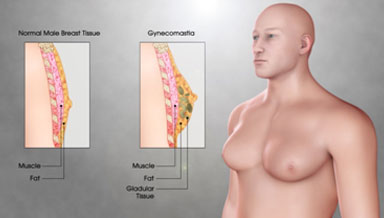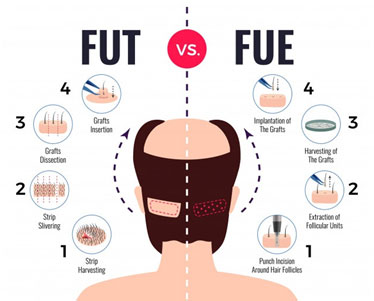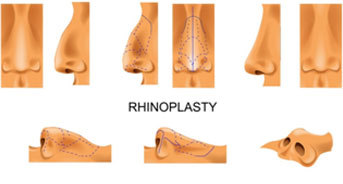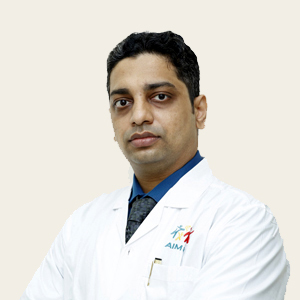Overview
The Plastic and Reconstructive Surgery department comprises of a team of highly qualified surgeons and experienced technicians. The team has access to the latest technology available and comes up with effective yet minimally invasive cosmetic reconstruction techniques. Common procedures include facelift, rhinoplasty, liposuction, eyelid surgery, breast reduction, breast augmentation, breast lift, tummy tuck, body lift, hair transplant, laser resurfacing, laser hair removal, reconstructive surgeries such as tissue transfer with local and pedicled flaps, skin grafts, hand surgery and multiple others. We take care of the patient’s aesthetic needs and provide them the best results along with complete safety and satisfaction. The team adopts high standards of surgical expertise to deliver the patients with best and superior quality care to enhance their appearance so that they can feel more confident about their personality.
Liposuction
Excess fat which occurs on the tummy, buttocks, thighs, hips, and chin, is often a cause of concern for many, including those who aspire to look good. Despite following a sensible diet and dedicated exercise regimen, people face difficulty in getting rid of the excess fat. Liposuction a surgical procedure can help these individuals to achieve a leaner, firmer appearance by reshaping their body contour.
What is Liposuction?
Liposuction is a cosmetic surgical procedure that involves the removal of localized fat deposits from the body by suctioning. It restores the proper body contour and enhances the aesthetic appeal.
The advancement in the technology and techniques has made the liposuction procedure safer. The benefits of liposuction are:
- It facilitates safe removal of fat
- Boost confidence and self-esteem
- Improves the health condition associated with fat loss
- Helps reshape the body areas which are resistant to diet and exercise
- Reduces pressure on the blood vessels and eases the circulation
Who is Eligible for a Liposuction?
Liposuction is best suited for the individuals:
- who do not respond to the diet and exercise
- who have firm, elastic skin and good muscle tone
- who do not have a life-threatening medical condition
Benefits of Liposuction
- Safe fat removal
- Confidence & self-esteem boost
- Improves health conditions related to fat loss
- Reshapes body areas where diet and exercise have failed to work.
- Reduces pressure on blood vessels and eases circulation.
Exercises after Liposuction
- AEROBIC EXERCISES – Light aerobic exercises and walking are recommended within two days of a liposuction procedure. You should return to exercise routines slowly and at a lower intensity level than one may have been used to before the surgery. Most surgeons recommend waiting three weeks after the procedure to return to higher impact activities such as running and aerobics.
- RESISTANCE EXERCISES – Resistance exercises can be resumed two weeks after the surgery. As with aerobic exercises, resistance routines should be returned to slowly and should be increased depending on tolerance. Medical attention may be necessary if any discomfort, pain or drainage results from these resistance exercises.
Gynecomastia
 Gynecomastia is a swelling of the breast tissue in men. It can affect men of any age or weight. Male breasts are relatively smaller when compared to the breasts of a female.Due to genetic reasons, an imbalance in the hormone levels of estrogen and testosterone, use of certain drugs or other unspecified reasons, men may develop enlarged breasts. The swelling may reduce over a period of time by itself or it can be treated with the help of male breast reduction surgery.
Gynecomastia is a swelling of the breast tissue in men. It can affect men of any age or weight. Male breasts are relatively smaller when compared to the breasts of a female.Due to genetic reasons, an imbalance in the hormone levels of estrogen and testosterone, use of certain drugs or other unspecified reasons, men may develop enlarged breasts. The swelling may reduce over a period of time by itself or it can be treated with the help of male breast reduction surgery.
What is Male Breast Reduction or Gynecomastia Treatment?
Male breast reduction is a treatment to reduce the size of the male breasts. It is a procedure that removes the excess fat and the glandular tissue to provide men with a flat, firm and masculine contour to the chest. It is the most consistent and effective treatment for enlarged breasts in men.
When Should Men Consider Gynecomastia?
- If men are conscious to remove their shirt in public to swim, to exercise or to participate in sports
- In case of psychological discomfort or embarrassment
- To improve the overall body
- To increase social confidence
Causes of Gynecomastia
- Genetic reasons – Klinefelter syndrome is a genetic condition in which affected males have an extra X chromosome, which results in the testicles not producing enough testosterone for the male body to develop and function normally.
- Imbalance in hormonal levels – Gynecomastia results from an imbalance in hormone levels in which levels of estrogen (female hormones) are higher in relation to levels of androgens (male hormones).
- Use of certain drugs& some other unspecified reasons
Gynecomastia Symptoms
Common symptoms include swollen breast gland tissue and breast tenderness.
You should consult a doctor if you notice swelling, pain, tenderness or nipple discharge in the breasts.
Hair Transplant
What is a hair transplant?
A hair transplant is a surgical procedure that involves the removal of hair follicles from any site of the body that has hair and replacing it with the hairless portion. It is done to restore hair density and also to induce hair growth in the affected area.
Who Can Undergo Hair Transplant?
Hair transplant procedure is recommended for people suffering from
- Less or no hair growth
- Balding / Baldness
- People with chronic / hereditary baldness
- Genetic defects
- Hair loss dueto injury, scar or burn
Procedure
First, the surgeon cleans your scalp and injects medicine to numb the back of your head.
Your doctor will choose one of two methods for the hair transplant:
- Follicular unit strip surgery (FUSS)
- Follicular unit extraction (FUE)
Difference between FUT & FUE Hair Transplant

|
|
STRIP / FUT |
FUE |
|
Shaving the head |
Not required |
Required |
|
Scarring |
Yes |
Less Scarring |
|
Process |
Donor strip is cut from the back of the head |
Small grafts of 1-3 hair strands are removed with an FUE punch |
|
Healing Time |
2 weeks |
10 days |
|
Precision |
Microscopic dissection makes it more precision |
Manual removal mess it less precise |
|
Damage of Grafts |
Minimal damage to the grafts |
Damage possible to the grafts |
|
Visibility of Operation Site (immediately after surgery) |
Hidden |
Visible |
Rhinoplasty
 What is Nose Reshaping?
What is Nose Reshaping?
Rhinoplasty is a surgery that changes the shape of the nose. Nose reshaping is a complex procedure that is very effective in changing the size and shape of your nose. The procedure can also change the angle of the nose, correct the tip of the nose, bumps and other defects related to the nose. Nose reshaping or rhinoplasty is also effective in treating breathing problems by altering the structure of the nose.
Who are the right candidates for nose reshaping?
You are eligible for a nose reshaping procedure if you have:
- wide or thin nose
- a bump on the nose
- wide nostrils
- crooked nose tip or nose shape
- deviated nasal septum
- injured or broken nose
Specialists

DR. PARAG TELAVANE
PLASTIC & RECONSTRUCTIVE SURGEON
M.Ch.(Plastic Surgery), D.N.B., M.S.(General Surgery)
View details
Appointment
ABOUT US
About AIMSDirector's Message
Vision & Mission
Accreditations
Awards & Accolades
Our Network
Phone Directory
Designed by Web Creations 2022. All rights reserved.










